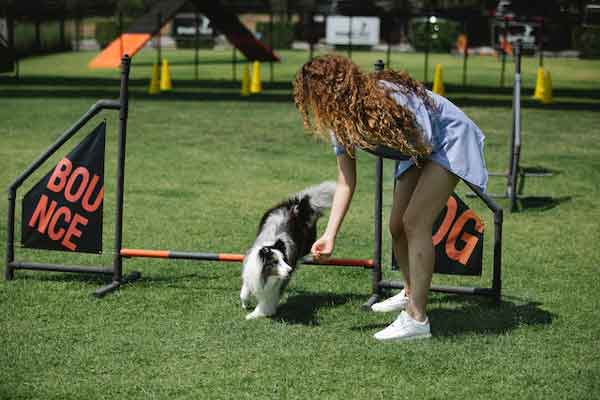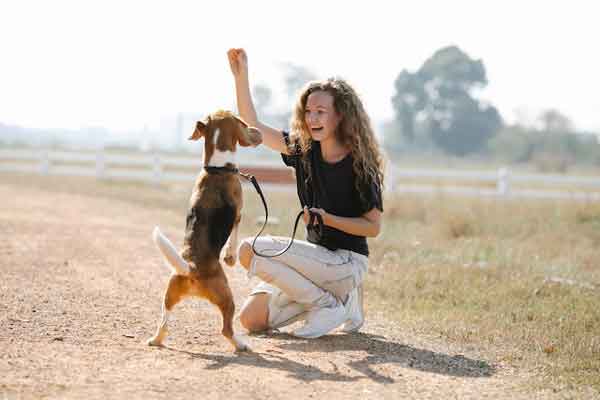Training your dog is not just about teaching them a few tricks; it is a fundamental aspect of responsible pet ownership. A well-trained dog is happier, healthier, and safer to be around.
In this blog, we will explore some useful information about dog training that every dog owner should know.
Understanding Dog Behavior
Understanding dog behavior is crucial for effective training and building a strong bond with your canine companion.
Dogs have natural instincts and behaviors rooted in their evolutionary history as pack animals. By comprehending their body language, vocalizations, and social structures, you can better communicate with your dog and tailor your training approach to their needs.
Understanding behaviors such as chewing, digging, barking, and aggression helps you address them appropriately and provide outlets for their instincts. Additionally, recognizing signs of fear, anxiety, or stress allows you to create a safe and supportive environment for your furry friend.
Basic Dog Training Techniques
Positive reinforcement is widely regarded as one of the most effective training techniques. It involves rewarding desired behaviors with treats, praise, or playtime.
Another popular method is clicker training, which uses a clicking sound to mark desired behaviors and reinforce them positively.
Additionally, voice commands and hand signals can be used to communicate with your dog and reinforce obedience. When it comes to basic dog training techniques, professional dog trainers at AustinDogTrainingPro.com advise that seeking guidance from qualified dog trainers can be highly beneficial.
Find experienced trainers who can help shape your dog into the perfect companion. From structured socialization to teaching basic obedience commands, professional dog trainers understand the nuances of dog behavior and can provide valuable insights.
Training Tips for Success
Training your dog can be a rewarding and fulfilling experience, but it also requires effort and consistency. Here are some training tips for success.
Firstly, establish a routine and stick to it. Consistency helps your dog understand what is expected of them and reinforces their learning.
Secondly, set realistic goals and break them down into smaller achievable steps. This keeps both you and your dog motivated throughout the training process.
Thirdly, reward desired behaviors by using positive reinforcement, such as treats, praise, and playtime. This encourages your dog to repeat those behaviors and strengthens the bond between you.
Lastly, don’t underestimate the importance of socialization. Expose your dog to different environments, people, and situations to help them become well-adjusted and confident.

Common Dog Training Challenges and Solutions
Housebreaking can be a challenging aspect of training, but with consistency and positive reinforcement, you can successfully potty train your dog.
Leash pulling is another common issue, but teaching your dog to walk on a loose leash through reward-based methods can solve this problem. Excessive barking can also be addressed by identifying the root cause and implementing appropriate strategies.
Advanced Training Techniques
Once your dog has mastered the basics, you can move on to teaching them tricks and advanced commands. This not only strengthens the bond between you and your dog but also keeps their mind active and engaged. You can also explore activities like agility training, which provides mental and physical stimulation for your furry friend. Canine sports and competitions are another option to consider, as they provide a fun and challenging outlet for your dog’s abilities.
Understanding the Role of the Owner in Training
As an owner, it is crucial to establish yourself as a leader and authority figure for your dog. This does not mean being harsh or dominant but rather being consistent, fair, and confident in your interactions. Training sessions should be seen as opportunities to bond with your dog, using positive reinforcement to build trust and a strong relationship. Maintaining a positive and nurturing environment at home further enhances the training experience.
Ongoing Training and Maintenance
Training is not a one-time event; it is an ongoing process. Once your dog has learned new behaviors, it is important to reinforce them regularly. This can be done through continued practice, occasional refresher sessions, and incorporating learned behaviors into everyday life.
It is also essential to be prepared for any regression or relapses and address them promptly with patience and consistency. As a responsible dog owner, you should also continue to educate yourself about new training techniques and advancements in the field.
Dog training is a journey that requires commitment, patience, and understanding. By investing time and effort into training your dog, you are not only shaping their behavior but also creating a stronger bond between you.
Remember, a well-trained dog is a joy to be around and can bring immense happiness to your life. So, why wait? Start your dog’s training journey today and reap the benefits of having a well-behaved and happy furry companion.

